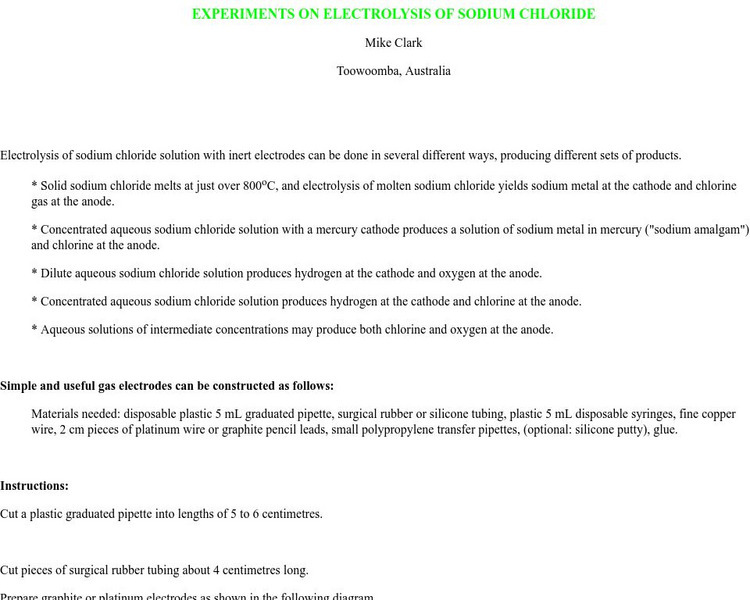Curated OER
The Nature of Salt
High schoolers record information from the periodic table for sodium and chloride. They determine whether salts are molecular or ionic compounds, along with sodium chloride's molecular weight, and relative weights
Curated OER
Modifying Viscosity of Egg Yolk
Students investigate the effects of substances on the viscosity of egg yolks. In this viscosity lesson plan, students separate egg yolks from their albumen and then add different masses of albumen back to each egg yolk. They measure the...
Curated OER
Locating the Salt Front - Section 1
For this salt front of the Hudson River worksheet, 7th graders first read an excerpt about the lower portion of the Hudson River that is an estuary. Then they use a colored pencil to plot salinity data from the table shown on a graph,...
Curated OER
Chemistry Chapter 11
In this chemistry worksheet, students name the forces that need to be overcome to reduce samples to individual atoms, such as the diamond. Then they determine which substances exhibit dipole forces. Students also complete a Phase diagram...
CK-12 Foundation
Ck 12: Electrolysis
[Free Registration/Login may be required to access all resource tools.] Students investigate voltaic and electrolytic cells describing the reactions that occur during the electrolysis of water. They also identify the products that would...
Chem4kids
Chem4 Kids: Sodium (Na)
Here at Chem4Kids you can find some great information about the 11th element in the periodic table, "sodium." Content focuses on sodium's electrons, where you can find sodium in nature and in the home, and how sodium combines with other...
Chem4kids
Chem4 Kids: Chlorine (Cl)
The 17th element in the periodic table is defined, chlorine. Find out how many electrons chlorine has and where you can find it in nature and in the home.
Missouri State University
Missouri State University: Atomic Structure of Minerals
This site shows the atomic structure of common minerals. It includes information on Paulings Rule and Ionic Substitution.
American Chemical Society
Middle School Chemistry: Why Does Water Dissolve Salt?
Explore this animation to learn why water dissolves salt.
BBC
Bbc: Cbbc Newsround: Salt Quiz
A short quiz to see how much students know about the salt in their food.
Other
Lcs: Experiments on the Electrolysis of Sodium Chloride
Complete directions several methods of conducting the electrolysis of sodium chloride solution. Helpful tips, discussion and a diagram of the apparatus and set-up is provided. Easily adaptable as a student lab or project.












